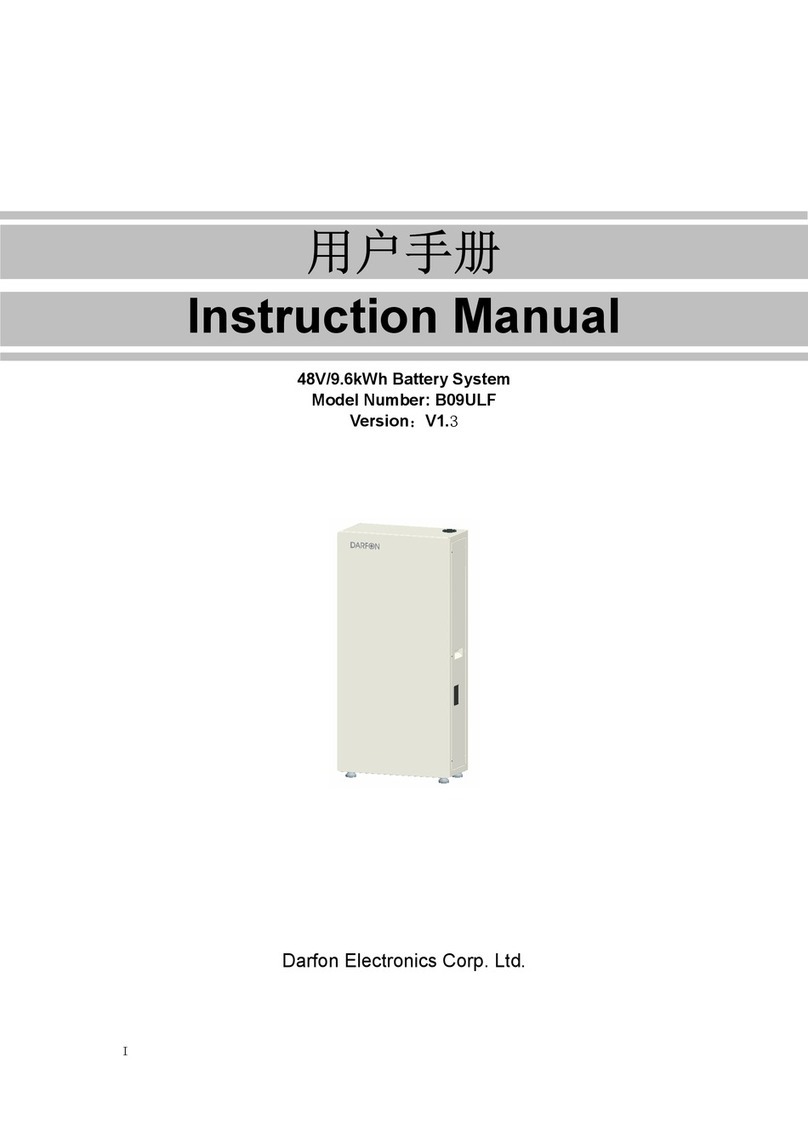I N S T A L L A T I O N M A N U A L B 0 9 U L F L I T H I U M B A T T E RY
R e v . 1 © 2 0 1 9 D a r f o n E l e c t r o n i c s Co r p . P a g e 2o f 28
TABLE OF CONTENTS
1Overview ......................................................................................................................................................................................................................3
2Safety Precautions.....................................................................................................................................................................................................4
3Identifications..............................................................................................................................................................................................................5
4Product Specifications..............................................................................................................................................................................................6
4.1 System Technical Parameters.....................................................................................................................................................................6
4.2Overall Dimensions and Construction ................................................................................................................................................6
4.3 Battery Modules..........................................................................................................................................................................................7
5Product Installation....................................................................................................................................................................................................9
5.1 Device list..........................................................................................................................................................................................................9
5.2 Before installation.....................................................................................................................................................................................11
5.3 System installation...................................................................................................................................................................................12
6Electrical Connection...............................................................................................................................................................................................17
6.1 System Wiring.................................................................................................................................................................................................17
6.2 DIP switch settings..................................................................................................................................................................................20
6.3 Grounding...................................................................................................................................................................................................21
7OperationS.................................................................................................................................................................................................................22
7.1 Power On or Off............................................................................................................................................................................................22
7.2 Display state .............................................................................................................................................................................................22
7.3 Host computer description...................................................................................................................................................................23
8Maintenance and Common Troubleshooting..................................................................................................................................................26
8.1 Daily maintenance........................................................................................................................................................................................26
8.2 Common troubleshooting table..........................................................................................................................................................26
9Packaging, Transportation, and Storage...........................................................................................................................................................27
9.1 System packaging........................................................................................................................................................................................27
9.2 System handling and transportation..................................................................................................................................................27
9.3 System storage........................................................................................................................................................................................27




























